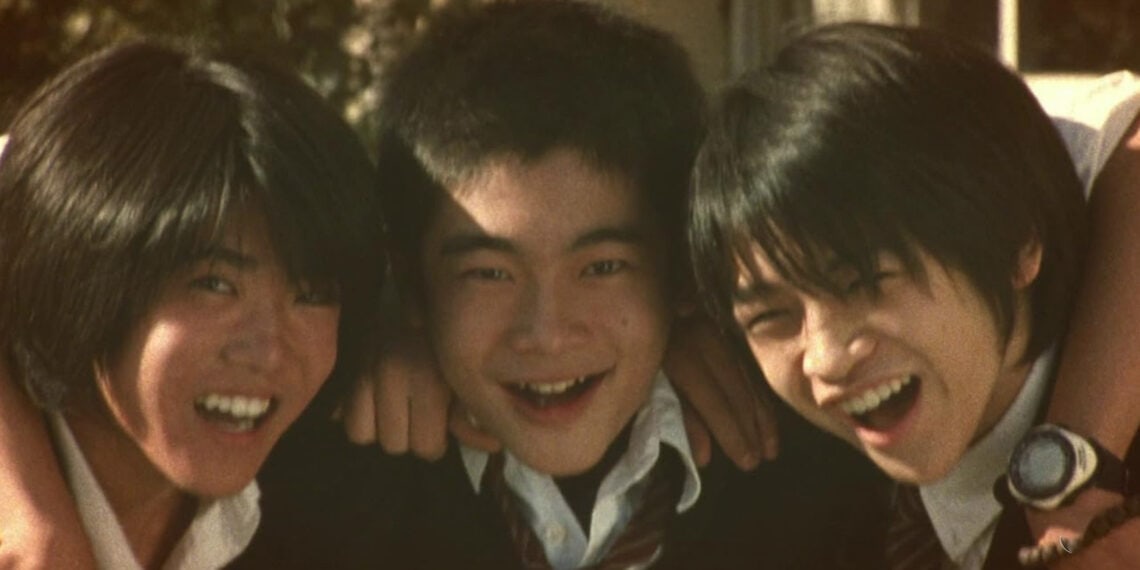Who are you? Who do your classmates or coworkers think you are? Do you lie to present to them a more ideal self? Do you tell them what they want to hear to find yourself in their good graces? How can you be sure they’re not doing this to you? If you found out that your child or your parent had committed a heinous crime, how would you react?
These are the types of questions raised by the cerebral 2010 thriller Confessions, directed by Tetsuya Nakashima. They’re not easy questions with which to confront yourself, but if you come along with us, we’ll explore how these uncomfortable questions can make for an eye-opening practice in the movie.
Confessions Movie Explained
In the introduction, we meet Yuko Moriguchi, a teacher who announces to her class that she will be retiring the following day. The class seems to be more or less in disarray, with the students running riot and talking over Moriguchi as she begins her final lesson to the class.
Moriuchi tells the students that she is retiring due to two deaths close to her in the recent past. One death was that of her male life partner, who died of AIDS, a statement that immediately grabbed her student’s attention. The other death was that of her daughter, whose death was ruled an accident but who Moriguchi explains was murdered by two of her students.
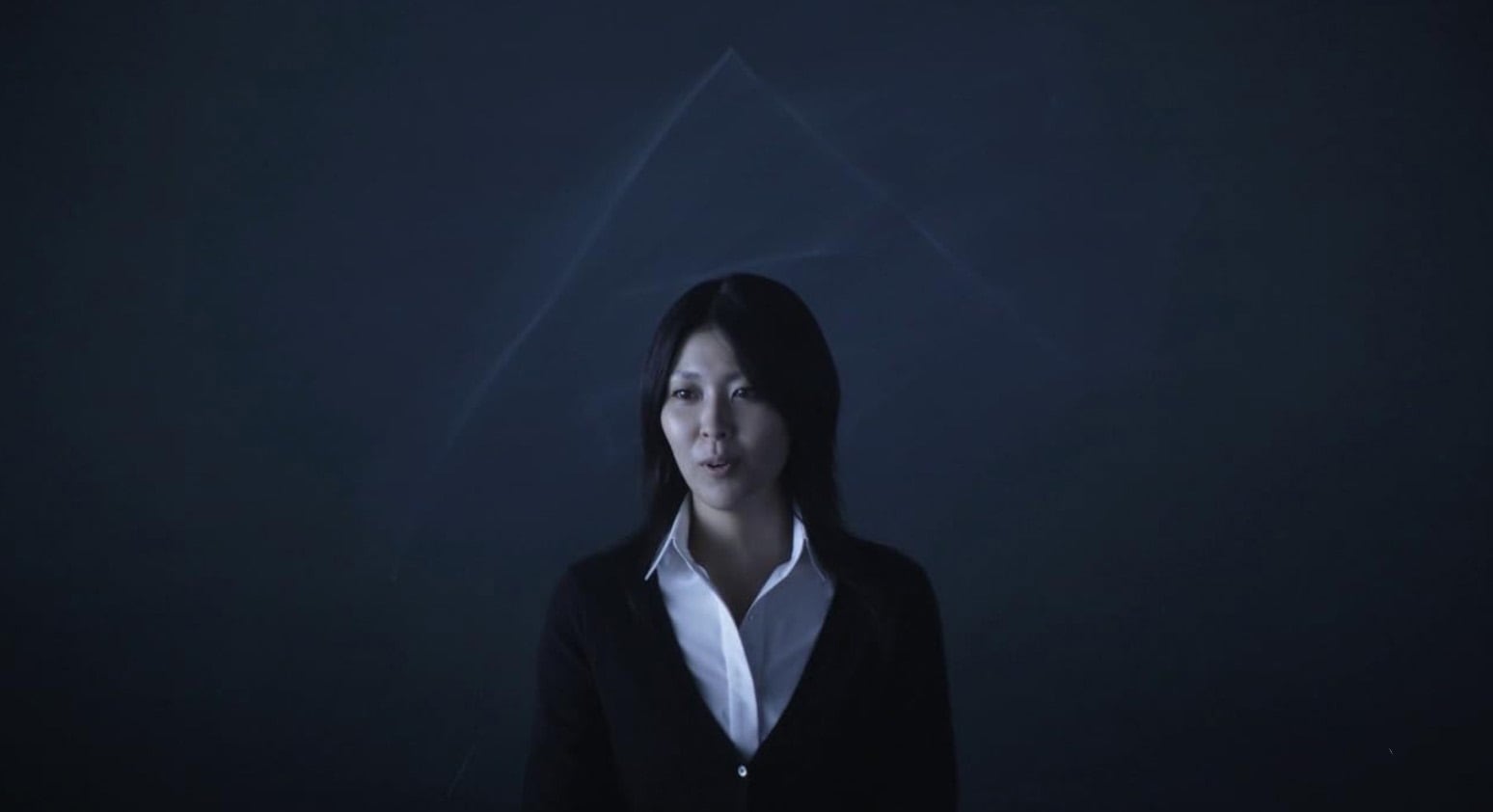
Refusing to give their names, Moriguchi instead describes the two students who killed her daughter, referring to them simply as. A and B. By this point, she has the class in the palm of her hand as they whisper amongst themselves about the suspects, quickly discerning their identities.
Moriguchi concludes her monologue by stating that she injected student A and student B’s milk cartons with AIDS-contaminated blood, at which point the class is dismissed, and the bulk of the film begins.
Confessions Of Different Characters
From this point on, we enter the peculiar structure of confessions. While we do follow a linear structure, it is not a typical one. Instead of examining the life of a single student or Moriguchi after these revelations, we explore the events of the ensuing semester or so from a number of perspectives.
In turn, we followed the two accused, Moriguchi, the class representative who interacts with one of the accused and the mother of the other accused, in addition to some other minor characters. These confessions display a deft handling of such a hefty ensemble cast while providing perhaps the best exercise in rhetoric that we have come across up to now.
Confessions is a tale of numerous perspectives, which is shown in having each segment of the film labeled as the Confessions of a different character, as well as in the stark photography, which emphasizes viewing characters through mirrors.
At times, it is as though we are observing the students in a voyeuristic fashion, completely in their element. At other times, we examine the characters that they put on while dealing with one another or the roles that they assume when they are put under pressure.
Yet further, we examine how different perspectives and newly discovered information can change one’s perspective of others. For example, we see fairly late in the film that one of the characters bears a tattoo, which indicates that she may be another child murderer who has gained notoriety. Thus, for a time, we operate under this belief.
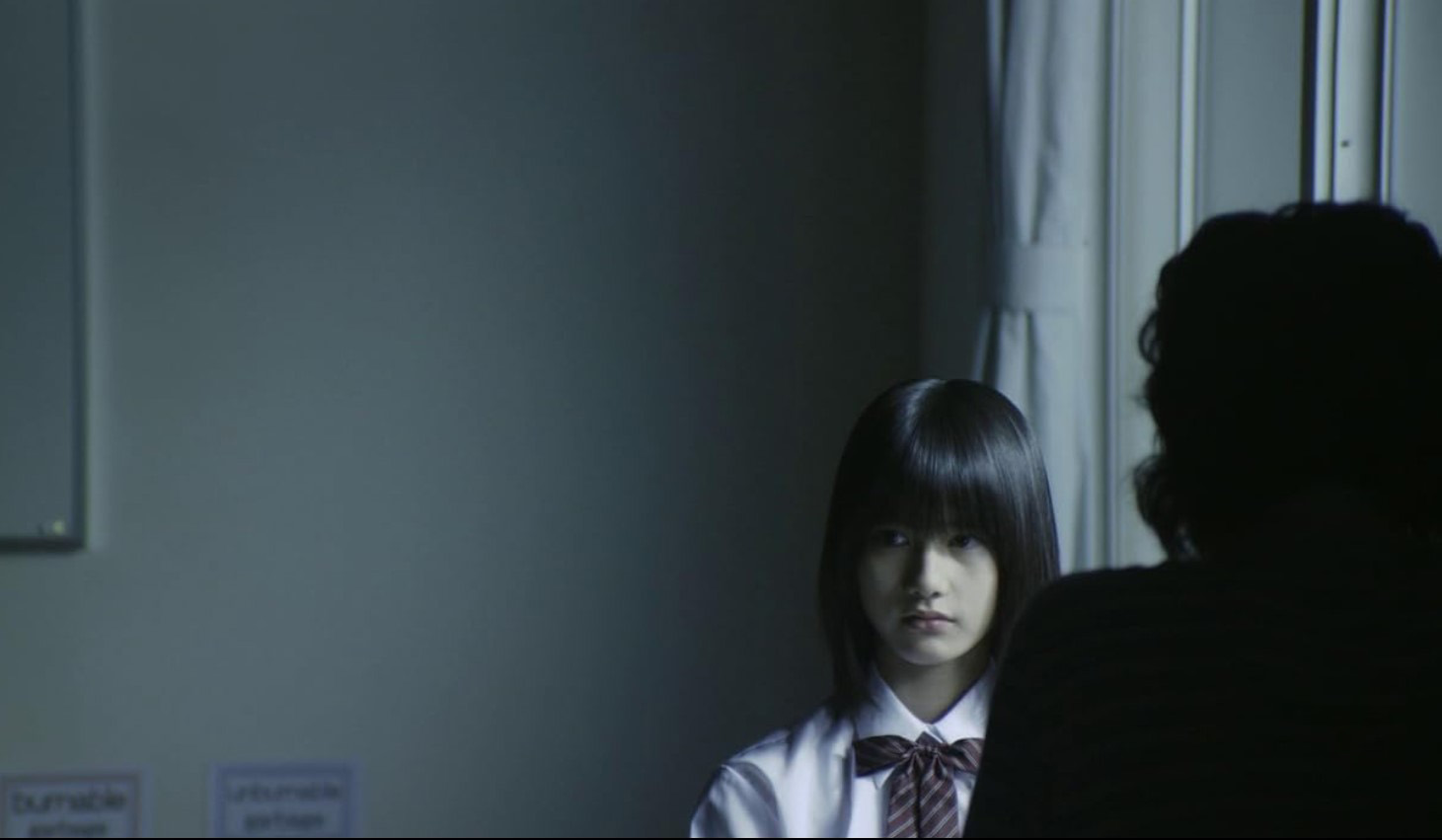
After yet more time passes, however, we learn that the person is merely a fan of the child murderer and that the tattoo is in reference to the killings that she committed. It’s in this manner that confessions are a head trip of a mystery.
Japan’s Criminal Law System
Due to some particular legal aspects of the film’s plot, it’s a story that could perhaps only be set in Japan. In the Japanese legal system, as in America and other countries, there is an age of criminality, meaning an age at which someone is tried as an adult for crimes for which they’re accused.
Typically, adults will face harsher penalties for their crimes, while children will go through different correctional facilities. In some cases, parents can also be held accountable for the crimes of an adolescent under their charge.
In 1949, when the law regulating these ages and conditions for handling juvenile criminals was first established, the lower age was 16. This meant that anyone under the age of 16 was not liable to face criminal charges for their crimes.
Instead, child criminals would be subject to the family court system rather than the criminal court system. These family courts were known at the time for handling issues behind closed doors, with a certain air of animosity being presented to the public.
Those who were found guilty could be involuntarily committed to mental institutions, but they could not be sent to juvenile correction facilities as their criminal counterparts from age 16 to 19 could.
After several high-profile violent crimes committed by minors over the latter half of the 20th century, this lower age of criminality was reduced in the early 2000s to 14.
This means that by the time that confessions were penned and later put to screen, those who were 14,15 and 16 could be held criminally liable for their actions and could face time in juvenile correctional facilities. But those 13 and under were still not liable for their crimes.
This unique situation within Japan provides the main conceit of confessions. Questioning whether children who are aware of this age gap in criminality and who might take advantage of it by committing heinous crimes like murdering classmates or family members should, in fact, be held responsible for their crimes.
Who Is To Blame?
Confessions explores this from multiple angles as it does all its issues and themes. It asks us as the audience to question whether the children are at fault, whether overprotective or entirely absent parents are at fault, or whether the system as a whole is at fault.
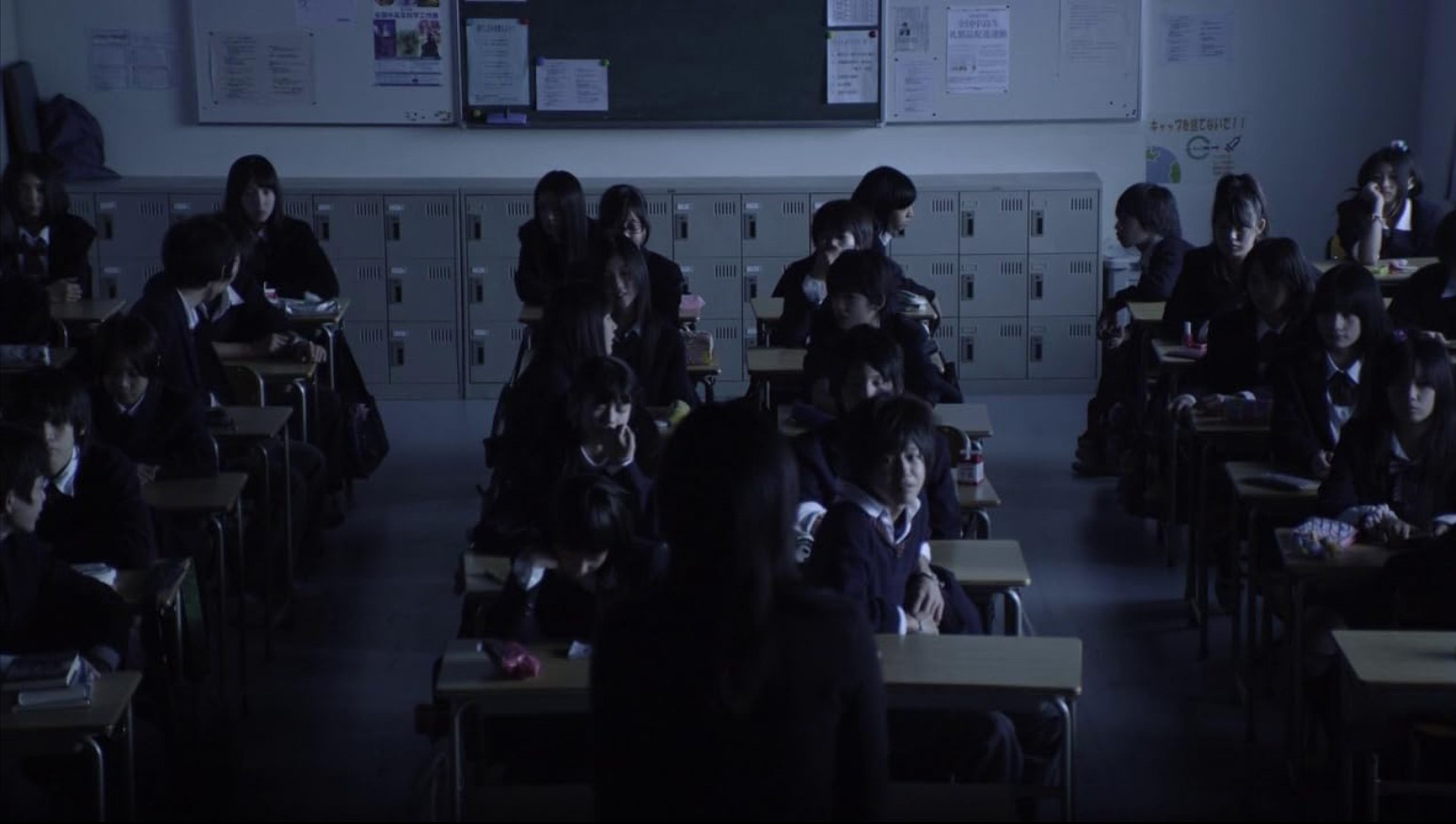
In this way, Confessions takes what could have been a fairly straightforward murder mystery plot and structurally flips it on its head, using the resulting confusion to raise questions pertaining to juvenile criminality. Or whether it is even moral to be consuming violent media in the 1st place while knowing that events like this actually occur.
In this manner, it’s not hard to see why Kanae Minato’s original novel, upon which the film was based, was such a runaway success upon release. It touched on a trend at the time, seeing as how youth crime, while lower than it had been in the 50s, sixties, and 80s, was peaking again in the early 2000s.
By the time the film was released, this rate had decreased once more, but with Tetsuya Nakashima’s stark vision of this dark tale, it makes sense that it touched such a nerve with the public and critics alike, making it a financial and critical success.
The Children And The Adults
Tetsuya Nakashima seems to be asking us, using the real-world phenomenon of childhood crime, “How different we as adults are from the children we’re observing.” More than once, parallels are raised between the children and the adults in the film.
Whether it’s a scene of several kids bullying another after tricking him into meeting them with the promise of meeting a girl instead of being juxtaposed with their teachers saying she would send a male counterpart to meet young boys who sought to exploit her. Or a child and a mother simultaneously having existential crises once their lives have gone off the rails.
With the focus of the film being placed primarily on the children and how they are affected by Moriguchi’s actions early in the film, we see that a conflation is occurring between the two.
She has become childish in her attempts at revenge, while the children represent a microcosmic view of adult society rather than a simple commentary on the nature of humanity. Once society breaks down, this microcosm of society is brutal for the sake of maintaining structure.
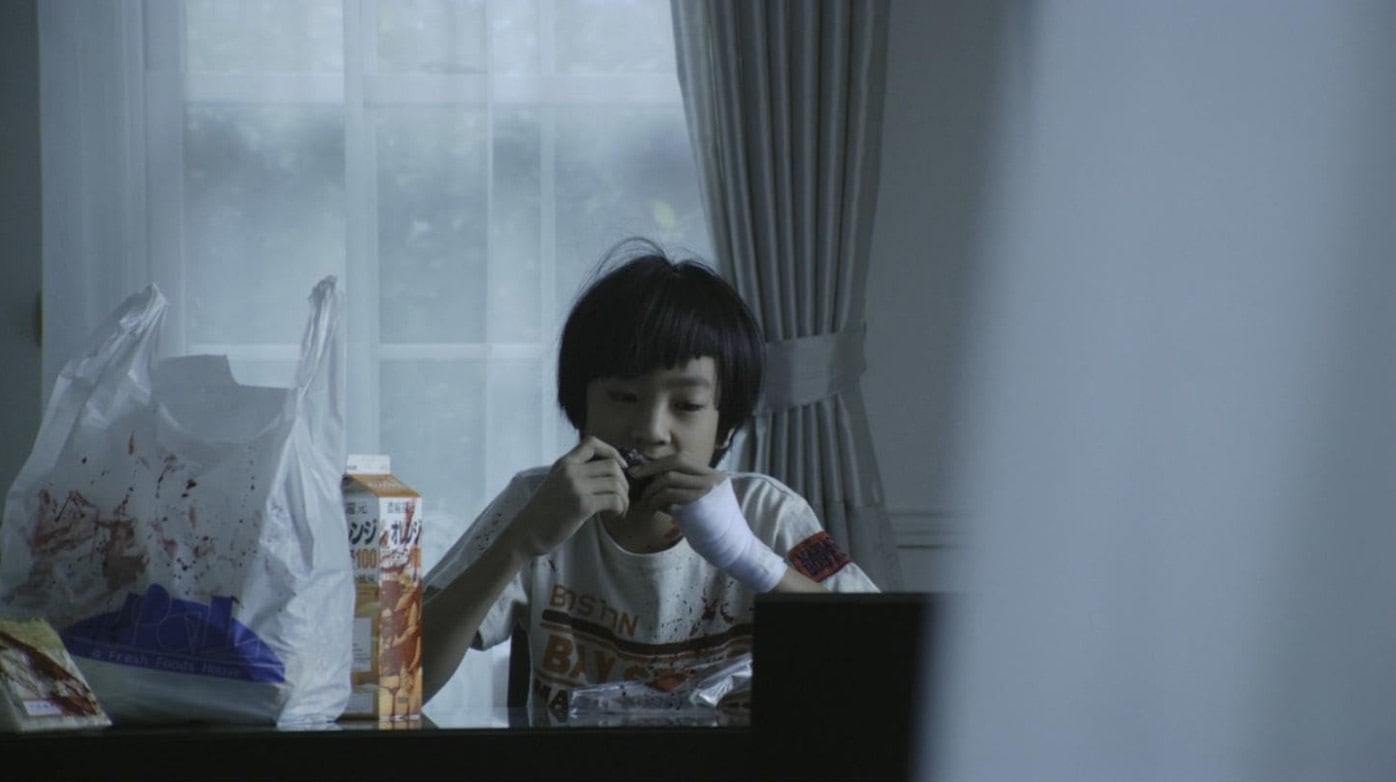
Those who are seen as outsiders are forced to feel the distance between them and the group, whether they are the two suspected murderers or a female classmate who is assumed to hold sympathies for them. We do not see 2 tribes going to war, but rather the main body of society trying to expel from itself those parts it sees as harmful.
We are shown the sheer brutality of this. However, by viewing these actions as played out by children rather than adults, they are legally not liable for any of their actions to one another.
Thus, we can distance ourselves from our own moral hang-ups relating to who does and does not constitute a functioning member of society. And instead, ask ourselves, on a more basic level, how moral these objections of outsiders are.
Confessions Ending Explained
Confessions is a film that raises many questions but answers virtually none that won’t directly tie up loose ends in the film’s plot. It’s a tale of many perspectives, and thus, it is a film that asks that we draw our own conclusions.
The ending is not ambiguous if taken at face value. But if we peel back the surface layer, we realize that in terms of theming, social commentary, and, to an extent, even plot, once we begin to question the film’s goals and motivations, we are presented with a large number of possible answers.
It’s from here that the decision becomes ours as to what the film exactly means. It’s likely a film that will annoy some viewers for these reasons. But on the same token, it’s not difficult to see why this one ended up taking home the award for Best Picture at the Japanese Academy Awards, among other nominations and wins.
It expertly walks the line between being general enough to appeal to a wide audience and subtle and nuanced enough to please more demanding viewers.


